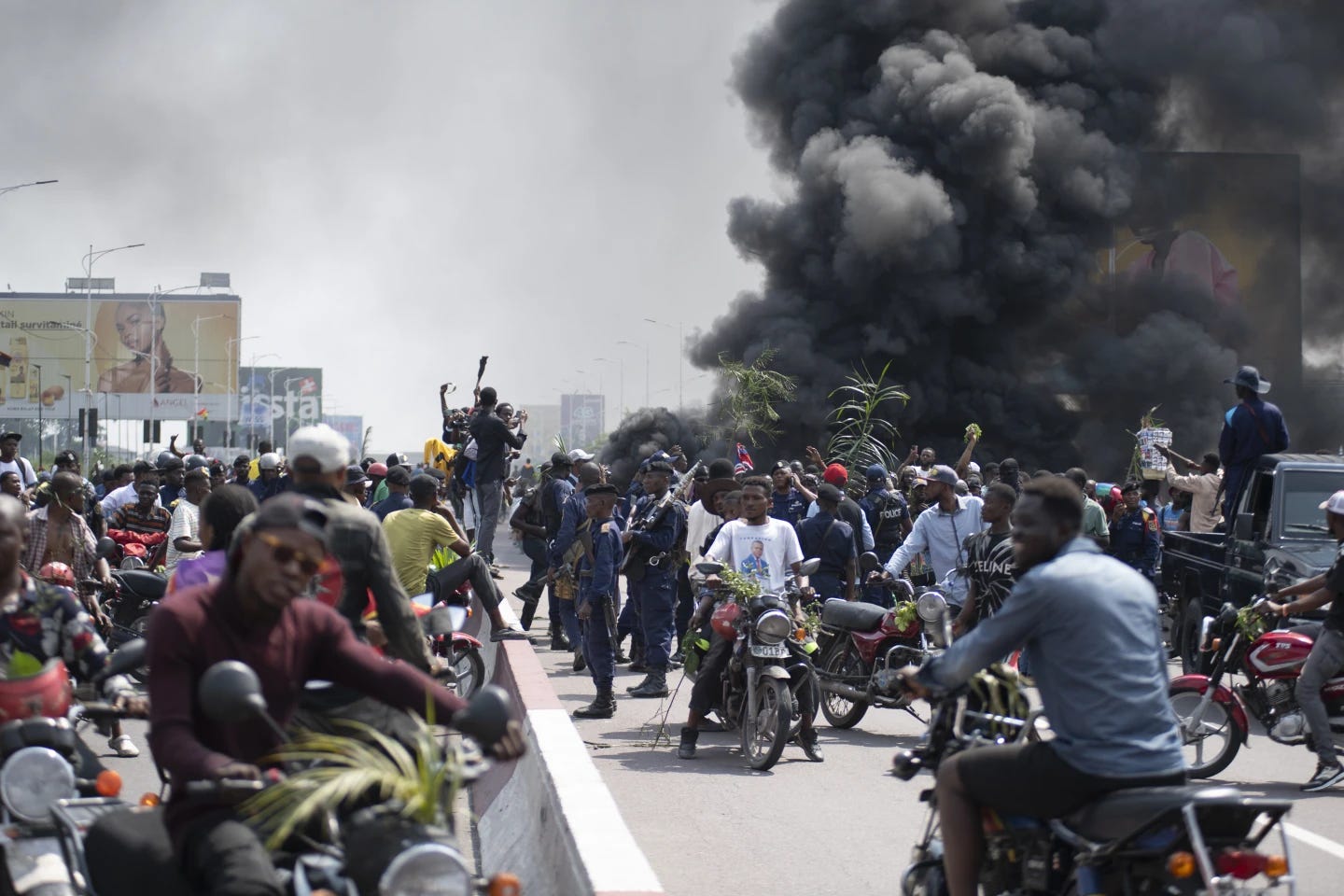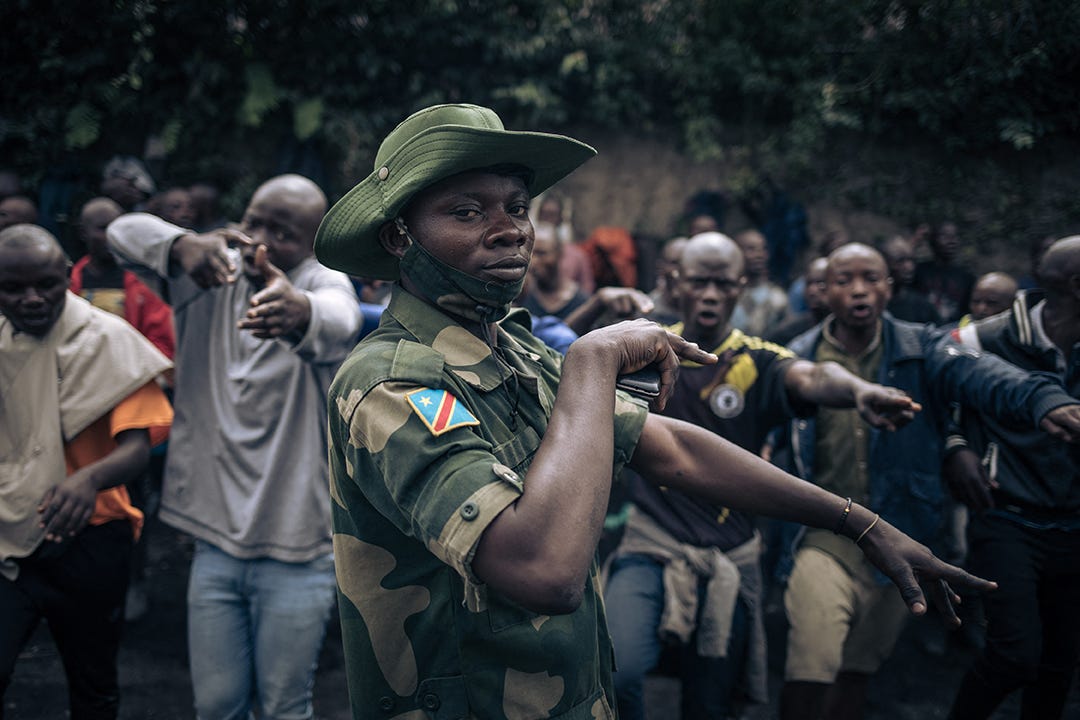Escalating Conflict in the Democratic Republic of the Congo: M23 Rebels, Rwanda’s Involvement, and a Growing Humanitarian Crisis
The M23 rebellion continues to destabilize the eastern DRC, displacing over a million people and raising concerns about Rwanda’s role in the conflict.

The Democratic Republic of the Congo (DRC) is facing escalating instability, driven by decades of conflict rooted in colonialism, historical tensions, corruption, and competition over natural resources.
Since the 1994 Rwandan genocide, which led to 1 million people being killed, tensions have persisted between the DRC and its neighbors, including South Sudan, Uganda, Rwanda, Burundi, and Tanzania. The March 23 (M23) movement, formed by Congolese Tutsi commanders in 2012, launched a rebellion against the Congolese government. After years of inactivity, the group resurfaced in 2021, seizing territory in North Kivu province, near the Ugandan border. Their advance ultimately led to the capture of the strategic city of Goma, further destabilizing the region.
The M23 Rebellion and Rwanda’s Alleged Role
The M23 group—named after a peace agreement signed on March 23, 2009—is one of more than 100 militant groups operating in the eastern Democratic Republic of the Congo (DRC). The rebel group is predominantly composed of Tutsis, an ethnic group native to Africa’s Great Lakes region.
Members of M23 told the Associated Press in an interview that their fight against the Congolese government is not over natural resources but rather for the future of the country itself.
“Our objective is Congo; we are fighting for Congo. We are not fighting for minerals, we are not fighting for anything [else], from a failed state to a modern state whereby we want to make Congo as a business land,” said Corneille Nangaa, a political leader of M23.
According to United Nations findings, neighboring Rwanda has allegedly been providing support to M23. Evidence suggests that Rwandan forces have deployed military equipment on battlefields in North Kivu, including air-defense systems and precision-guided weapons.
Rwandan forces were also allegedly seen at M23’s training camp in Tchanzu, near Rwanda’s border, where recruits receive instruction on ideology and military strategy, including “war tactics” and “bush tactics.” Many of the recruits—some voluntary, some forced—include children.
It is estimated that more than 4,000 Rwandan forces are stationed in the DRC.
“There was no question that there are Rwandan troops in Goma supporting the M23,” Jean-Pierre Lacroix, the UN peacekeeping chief, told the BBC.
While the Rwandan government has denied claims of supporting M23, the foreign ministry released a statement on Jan. 29 warning of a “serious threat” to Rwanda.
“This fighting close to the Rwandan border continues to present a serious threat to Rwanda’s security and territorial integrity and necessitates Rwanda’s sustained defensive posture,” the ministry said in a press release.
The Fall of Goma and Its Strategic Importance
More than 3,000 people were killed in Goma after M23 rebels captured the major city—home to more than 2 million residents. The region contains trillions of dollars in mineral wealth, including gold and cobalt, which is used in popular electronics such as the iPhone.
“We expect this number to go up,” said Vivian van de Perre, deputy head of the UN peacekeeping mission in the Democratic Republic of the Congo (DRC), in a CNN report.
“There are still many decomposing bodies in certain areas.”
M23 launched its operation into Goma on Jan. 26 and fully captured the city on Jan. 30 after a months-long offensive and heavy fighting with Congolese forces.
A coalition of rebels, including M23—known as the Alliance Fleuve Congo (AFC)—called for a ceasefire last Monday, citing the "humanitarian crisis caused by the Kinshasa regime,” referring to the DRC’s government.
However, fighting between rebel groups and Congolese forces continued as of Friday, displacing thousands. Many have fled to Bukavu, the provincial capital, where UN agencies have relocated after Goma’s capture.
“I left Mount Goma to head for the port of Goma to flee. I had a suspicion that the enemy was advancing rapidly towards the town. This is a very dangerous place,” said the wife of a Congolese soldier traveling through Goma, in an interview with Al Jazeera.
In response to the capture of Goma, Congolese Defense Minister Guy Kabombo Muadiamvita ordered any plans for negotiations with rebel groups to be “completely burned immediately,” as rebels have reportedly planned to march to the capital, Kinshasa, to overthrow the government.
“We will stay here in Congo and fight. If we do not stay alive here, let’s stay dead here,” Muadiamvita told the Associated Press.
Humanitarian groups are also raising alarms over the risks faced by aid workers amid the violence.
“This incident is a reminder of the unacceptable risks faced by aid workers,” said the UN Office for the Coordination of Humanitarian Affairs (OCHA) in a statement, adding that three agencies have suspended food and agriculture programs after workers were killed Wednesday—affecting more than 36,000 people.
Following the capture of Goma, many civilians, including more than 150 female prisoners, were raped and burned to death in a mass jailbreak, underscoring the lawlessness and brutality gripping the region.
Humanitarian Crisis: Millions Displaced
Since the beginning of January 2025, more than 480,000 people in the Democratic Republic of the Congo (DRC) have been displaced following the capture of Goma. Data from the UN Office for the Coordination of Humanitarian Affairs (OCHA) shows that more than 3 million people were displaced within the DRC between January 2024 and November 2024, with 96% of those displaced coming from the eastern DRC. After the escalation of the M23 group, there was a 57% increase in the number of displaced people between December 2024 and November 2024.
“The impact of the recent escalation across eastern DRC has been devastating for the civilian population. Many of those displaced in the past month have already fled violence multiple times. Whole generations in eastern DRC have known nothing but conflict, and their needs have been utterly neglected,” said Eric Batonon, a member of the Norwegian Refugee Council (NRC), who is based in the DRC, in a statement.
According to World Relief, nearly 15 million children have been affected by instability in the country, with statistics from the UN highlighting that many of the children impacted face disease outbreaks, food insecurity, and sexual violence.
International Response
The international response to the ongoing instability in the Democratic Republic of the Congo (DRC) has been notably muted compared to previous conflicts with rebel groups, such as the 2012 uprising. Humanitarian groups have pointed to factors such as instability within the Trump administration and other international events as reasons for the limited response.
“So far, there has been significantly less international pressure than there was in 2012 for various reasons, including the new administration in the White House, other ongoing international crises, and Rwanda’s role in continental peacekeeping and security operations,” said Ben Shepherd, a member of Chatham House’s Africa Program, in a report.
France previously called for the withdrawal of Rwandan forces and M23 rebels in January after French Minister Jean-Noël Barrot visited the region. Foreign Ministry spokesman Christophe Lemoine stated that the sovereignty of the DRC is “not up for negotiation.”
“Rwandan forces must leave DRC territory immediately. The sovereignty and territorial integrity of the DRC are not up for negotiation,” said Lemoine in a report by France24.
The situation in the Democratic Republic of the Congo remains dire as the M23 rebellion continues to bring instability to the eastern region, displacing millions. While international attention has been limited, the call for greater intervention and diplomatic efforts grows louder.





